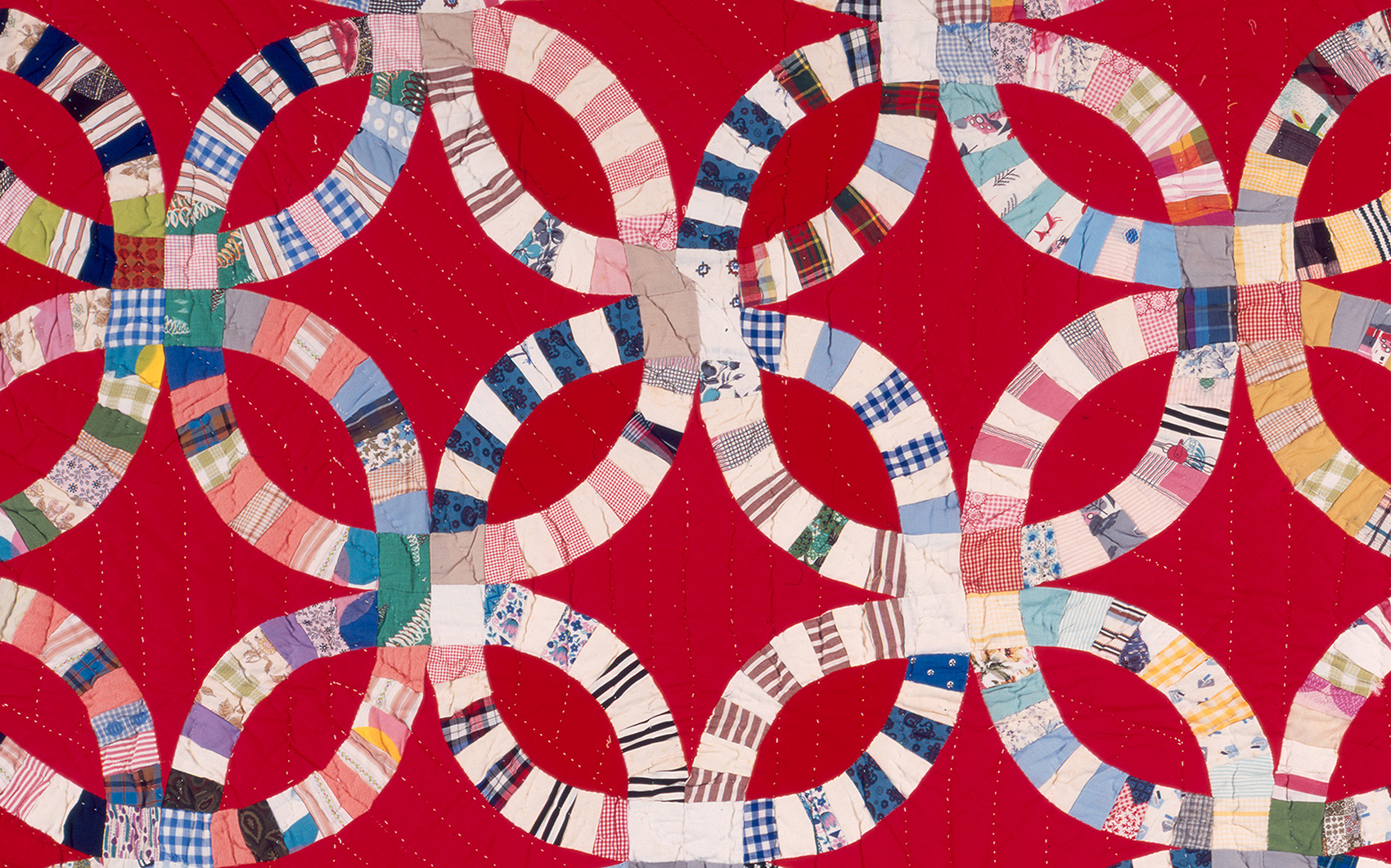
African-American Quilts
Sept. 4, 2015-May 25, 2016
from the Cargo Collection

“You can find joy in anything you do. It makes me feel so good to make a pretty quilt and have someone enjoy it.”
—Nora Ezell
African-American quilts are a critical segment of quilt history. They reflect the diverse traditions that merge to form our American quilt heritage. African-American quilts come in every imaginable style: traditional patterns and original patterns, bold colors and subdued colors, and pieced quilts and story quilts. Like all American quilts, they vary from region to region, from era to era, and from person to person.
For twenty years, Dr. Robert Cargo, owner of the well-known Folk Art Gallery in Tuscaloosa, Alabama, championed self-taught artists, especially African-American quiltmakers from his home state. In 2000, we acquired a 156-piece collection from Dr. Cargo, which spans the twentieth century and represents locales all over Alabama, including urban areas such as Birmingham, rural areas like Greene County, and now-famous communities such as Gee’s Bend.
Several of the artists in this exhibition have talked about their quilts and their quiltmaking process. Many of their words coalesce around a few ideas:
CREATIVITY: “A lot of people have asked me about my colors. I don’t care about color combinations. I do what looks good, but I keep the pattern in mind.” —Nora Ezell
EMOTION: “I still think what I’m doing is just ‘plain old Yvonne.’ And when somebody else sees my work, it touches my heart.” —Yvonne Wells
COMMUNITY: “I did not make fancy quilts until after I joined a senior-citizens quilting group with Mary Maxtion. Sometimes she quilts with me.” —Lureca Outland
See if you can find traces of these ideas as you view these works of art from the Cargo Collection of African-American Quilts.